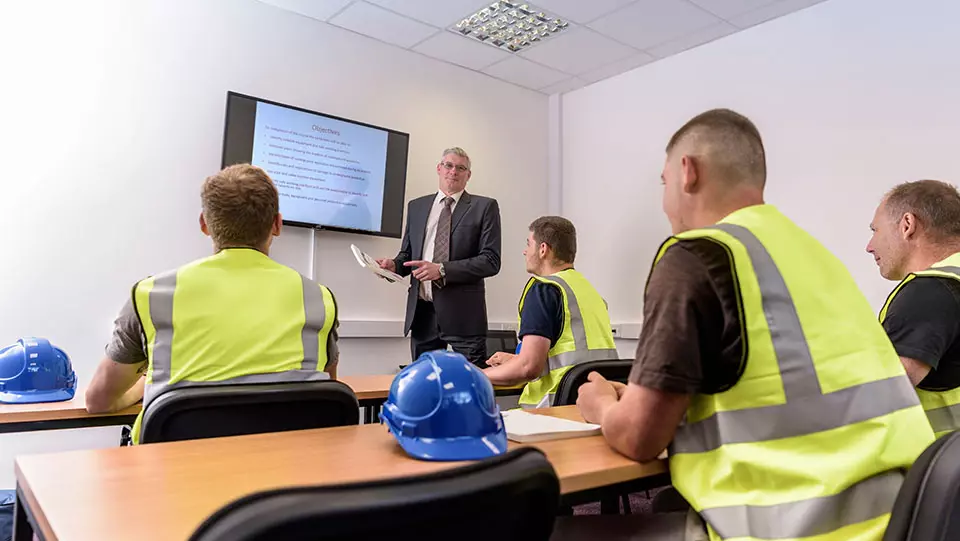Protecting Against Common Fire Risks During Construction


It’s nothing new that the construction industry has to deal with a variety of hazards, but a growing number of construction site fires are drawing attention to this particular risk in construction.
On average, between 2016 and 2020, firefighters responded to more than 11 fires a day at buildings under construction in the U.S.1 Those fires led to an annual average of five civilian deaths, 62 civilian injuries and over $376 million in direct property damages.1 Travelers Risk Control professionals have noted an upward trend in significant fire losses at construction sites in recent years, as wood frame construction activity has increased in the U.S.
Fires during construction can spread rapidly, especially when sprinklers have not yet been installed or activated and combustible materials are being loaded into the building. All it takes is one small ignition source to start a major fire.
With walls often not yet complete, void spaces can create a wind tunnel effect during a fire, intensifying the flames. Firefighters may be unable to safely enter unfinished buildings, which may have unprotected stairwells and other dangerous conditions. Often, they have to take a defensive position to contain the fire to the construction site.
Fire risks during construction
There are several common causes of fire during the construction process. Examples include:
- Hot work. Hot work operations pose a significant risk because they can introduce ignition sources into many areas of the worksite. Even several hours after welding, soldering, grinding or other hot work has been completed, a spark can smolder and ignite combustibles, sometimes after crews have left for the evening. Implementing a hot work permit system, observing a dedicated fire watch with a minimum 60-minute cool-down period, and assigning a fire prevention Permit Authorizing Individual (PAI) to oversee operations can help address the risk of fires.
- Temporary heaters. All temporary heaters should be UL Listed and used in accordance with manufacturer’s instructions. Maintain safe distances from combustible materials and prohibit other contractors and workers from bringing temporary heaters onto job sites without approval. Heaters should be monitored by contractors or security guards for safe operation during use.
- Arson. Unsecured construction sites may be at risk of vandalism, theft and arson. Having a layered approach to security, including perimeter controls, fencing, lighting, electronic intrusion detection systems and security guards on duty after hours can help reduce the risk of unauthorized entry to the site.
- Smoking. Smoking presents a serious fire risk to any construction site. Maintaining a strict no-smoking policy that is clearly communicated to all employees and subcontractors and providing a designated safe smoking area help prevent the risks of fire due to ash or carelessly discarded cigarettes.
- Flammable and combustible materials. All flammable and combustible liquids and gases should be used and stored so that they do not present a fire hazard to the site. Limit the amount of flammable and combustible materials inside the building under construction and designate safe storage locations.
- Cooking. While having a break area on-site is acceptable, workers should not be allowed to bring any cooking equipment, such as grills, hot plates or small microwave ovens, to the construction site.
- Temporary electrical and lighting. All temporary electrical service lighting should be installed in accordance with National Electrical Code standards. Systems and lighting should be maintained and regularly inspected by the electrical contractor.
- Rechargeable lithium-ion batteries. Cordless tools and other battery-run equipment present risks of overheating and igniting fires. Charging stations should be outside the building under construction and stored in a safe location.
- Lack of fire protection. Until fire sprinklers are activated, having fire extinguishers distributed throughout the site, standpipes for firefighting equipment and identified proximity to fire hydrants closest to the worksite can also help firefighters contain fires and minimize damage. Where provided, automatic sprinklers should be activated as soon as practical as construction progresses.
Following the National Fire Protection Association’s standard for fire prevention during construction, NFPA 241 (Standard for Safeguarding Construction, Alteration, and Demolition Operations) can help reduce fire risk factors associated with construction.
As building continues, taking the time to implement proper fire safety precautions can help protect your construction site and project timeline from delays and also prevent unwanted negative publicity.
Source
1 https://www.nfpa.org/News-and-Research/Data-research-and-tools/Building-and-Life-Safety/Fires-in-Structures-Under-Construction, National Fire Protection Association.



